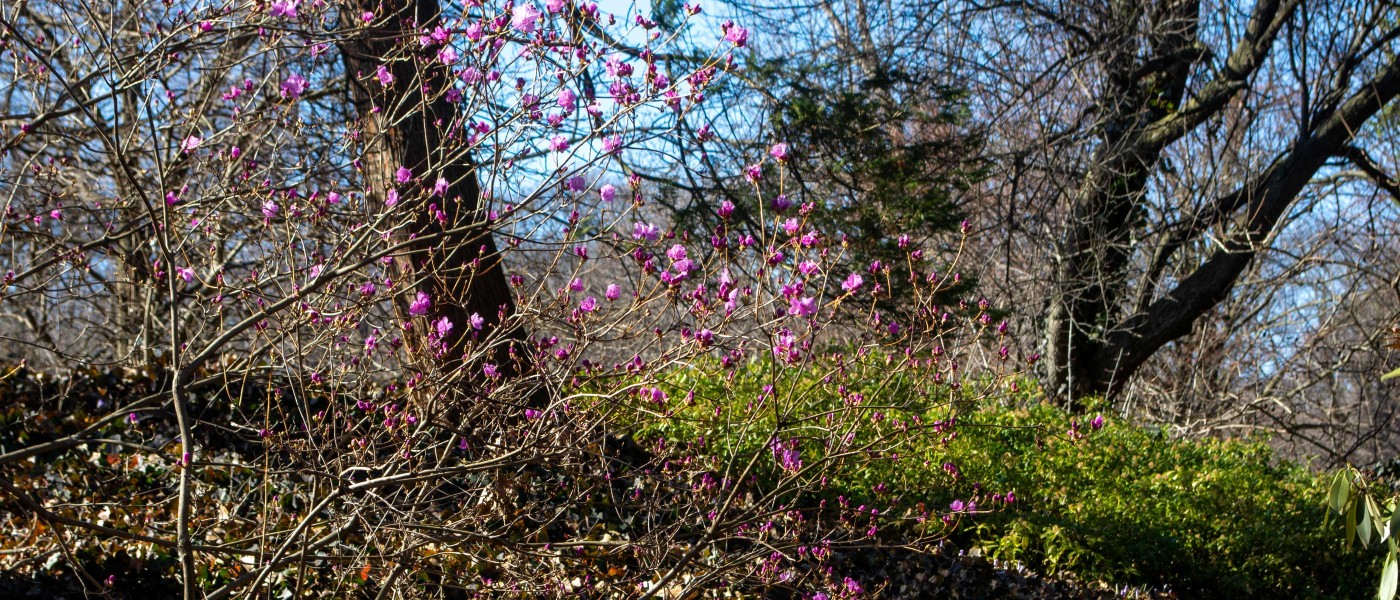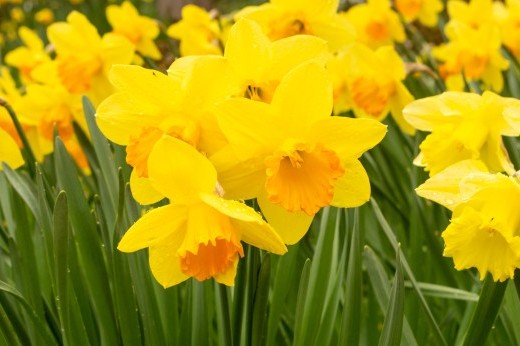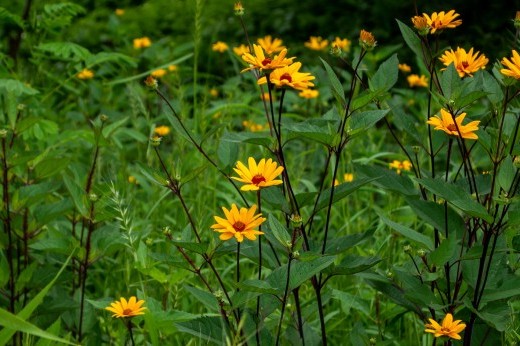Ask a Gardener is a seasonal advice column written by BBG gardener Laura Powell.
I bought a pollinator seed mix with a wide variety of flowers, and planted them in a bed on my roof that previously had been overrun with weeds. As the seeds are starting to sprout, is there a way to tell which are the intended flowers versus unwanted plants?
Libby
Brooklyn
Dear Libby,
I’m excited for your pollinator garden! I love that it's in sync with Brooklyn Botanic Garden’s 2024 theme.
As your seeds start to sprout, it can be a bit of a mystery to figure out which little green things are germinating from the seeds you planted and which ones are party crashers. I’m happy to share some tips.
First, look at the seed package or the supplier’s website for pictures or descriptions of the seedlings. If pictures are available on the website, try to match the photos to the seedlings in your garden. Whatever doesn’t match, pull it out.
If all you have are descriptions and not photos, observe the shape, size, texture, and color of those tiny seedling leaves. Each plant has its own unique leaf style—see if they match the descriptions of the seedlings in your garden. Note that newly germinated seeds sprout one or two “seed leaves” before growing their true leaves; often the seed leaves do not resemble the true leaves, so it’s best to wait for the third leaf to emerge before identifying the plant.
In addition to leaf shapes, plants also have their own growth habits. Some grow very upright and others are more spreading. Compare their growth styles to the expected habits of the flowers from your seed mix.
Since you planted a mix, one indication that a plant might be a weed is that there are just too many of them, so be on the lookout for any one plant that seems to be overrepresented in your bed. Even if you’re not sure if it’s a weed, you don’t necessarily want one species dominating or overcrowding the biodiverse plant community you’re trying to establish—so it’s a safe bet to pull some of those seedlings and keep a close eye on the rest.
If you are unable to identify the plants from their leaves and growth habit, you can wait until they flower. Although it’s more manageable to pull the weeds while they are still tiny seedlings, it is far easier to identify plants by their flowers than by their foliage.
Also, don’t worry if the plants from your pollinator mix don’t bloom the first year, especially if you sowed the seeds in the spring. This doesn’t mean that you chose wrong when you were weeding. It’s just that many perennials need to experience a cold period before blooming.
I hope these tips help. If you end up pulling a few desired plants and letting a few weeds grow to maturity by mistake, don’t be discouraged. The single greatest factor that will help you identify weeds is experience. So be patient and enjoy the journey.
Why can’t I plant tomatoes in March if the weather feels warm?
Miriam
Newton, MA
Dear Miriam,
I know exactly how you feel! Whenever the weather starts warming up in the spring, I want to plant all the warm-season vegetables, but I restrain myself because I know that it is likely to make things harder for those plants in the long run.
Why is March considered too early to plant tomatoes in our region, even if the weather feels warm? First of all, soil temperature rises more slowly than the air temperature, so the soil likely hasn’t warmed up yet. Tomatoes and other warm-season transplants generally need soil temperatures above 55°F. If you are planning to sow directly in the soil, the soil temperature needs to be even higher than that (65–70°F).
Additionally, even if daytime temperatures are rising, nighttime temperatures likely still dip, sometimes even into freezing temperatures. Planting tomatoes too early can expose them to frost damage, possibly damaging or killing the young plants.
So when is the right time to plant warm-season plants? The standard recommendation is to wait until the last frost date in your area has passed before planting tomatoes. If you’re eager to get a head start, consider starting tomato seeds indoors 4–6 weeks before the last frost date and then transplanting them outside when the weather is more stable.
There is nothing like the taste of a fresh summer tomato, picked straight from the garden, but impatience will not bring a faster or more delicious crop. It’s always better to err on the side of caution and wait for the right conditions.
If you just can’t wait to get an early start on the season, and you have time and means to invest, one option is row covers. Row covers are lightweight fabrics that help protect your plants from cold weather to extend your season in the spring and fall.
Use supports like wire frames or hoops to ensure the fabric doesn’t rest on any leaves, and don’t forget to roll it back on hot sunny days so your tender plants don’t get too hot. Remove the fabric completely once your last frost date has passed. You can reuse these year after year!
What is the best strategy for moving seedlings from indoors to outdoors?
Sylvia
Port Washington, NY
Dear Sylvia,
The best way to transition seedlings started indoors to outdoor planting is by using a process gardeners call “hardening off.” The process is exactly what the name sounds like: a gradual toughening of the plants so they aren’t shocked by the transition from the cozy, protected indoors to the exposed and rugged outdoors.
There are several possible steps you could take to toughen up your plants before planting them outside. You do not need to do all of them; you can choose the ones that make sense for your schedule and availability.
- Start by using a fan on your seedlings while they are still indoors. You don’t want the air to blow too hard—a gentle, indirect breeze will do. The air movement will not only help prepare your plants for the exposure they will encounter outside, but it is also helpful for preventing fungal disease.
- About 7–10 days before planting your seedlings in your garden, begin transitioning them gradually to life outside. Put them in a protected spot at first, away from direct sunlight and wind, starting at a few hours per day and increasing gradually. Bring the plants inside at night.
- As you get closer to planting time, move the plants to an area with sun and wind conditions closer to what they will experience in the garden.
- Always keep an eye on the forecast. If the temperature will dip below what is safe for your seedlings, keep them inside until it warms again.
- Your seedlings are ready to plant! Plant as you would normally and water them to help them get established in their new home.
The steps listed above offer an ideal transition, but the hardening off process is time-consuming, and I don’t want you to be discouraged if you can’t complete all the steps.
The only truly mandatory step is to check the forecast before moving your plants outdoors. If you have chosen the right place in your garden for your plants and the right time of year to plant them, you can just transplant directly from indoors to your garden. They may go through more of a transition period before adapting, but they will probably not suffer any lasting harm.
Got a question for Laura? Submit questions for our summer installment of Ask a Gardener using the form below.



